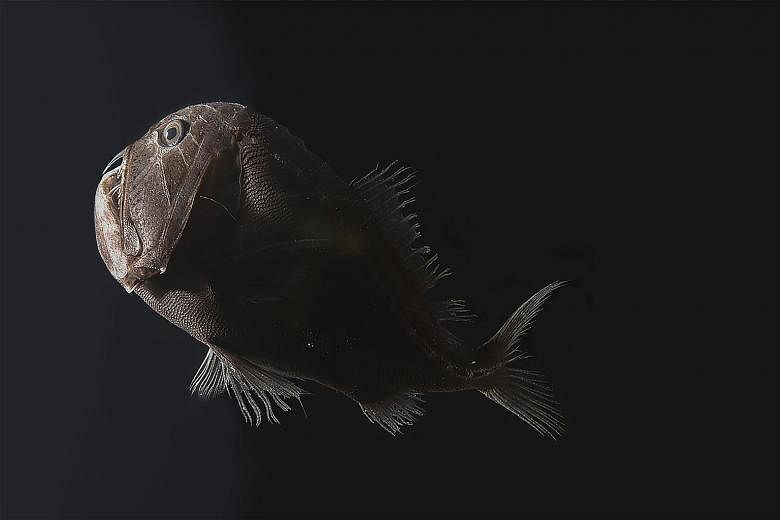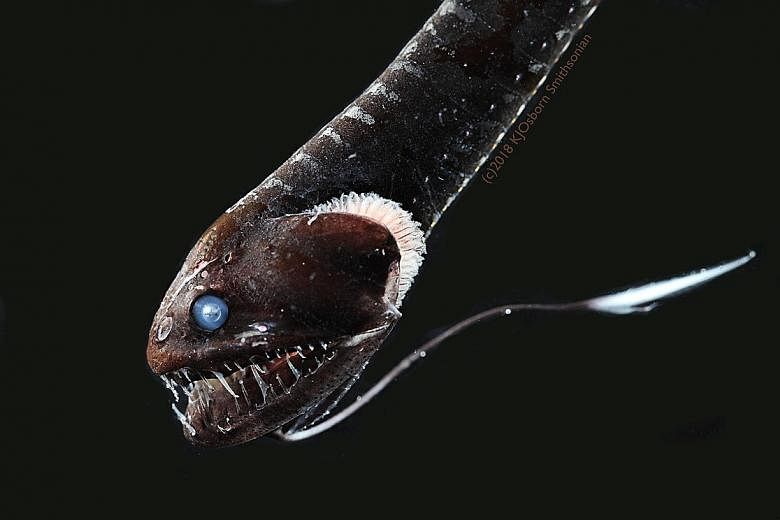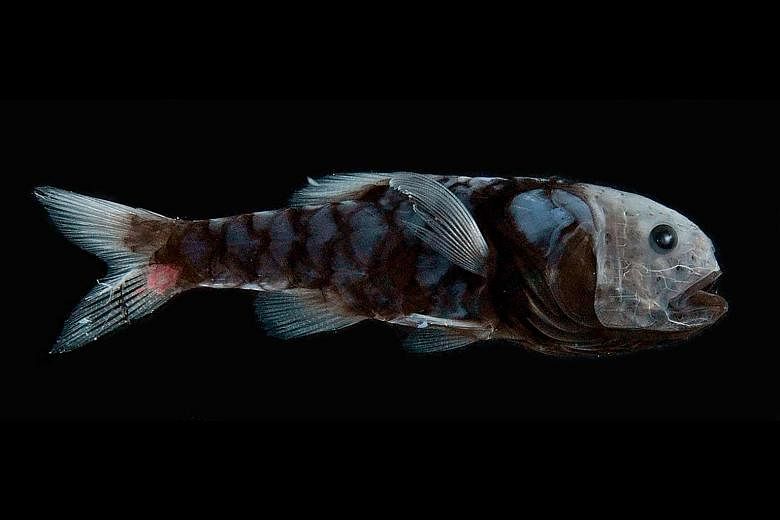Dr Alexander Davis admits that he can be a glutton for punishment. He staked part of his PhD on finding some of the world's best-camouflaged fish in the ocean's deepest depths. These animals are so keen on not being found that they have evolved the ability to absorb more than 99.9 per cent of the light that hits their skin.
To locate and study these so-called ultra-black fish, the Duke University biologist said he relied largely on the luck of the draw. "We basically just drop nets and see what we get," he said. "You never know what you're going to pull up."
When he and his colleagues did cash in, they cashed in big. In a paper published in Current Biology, they report snaring the first documented ultra-black animals in the ocean, and some of the darkest creatures ever found: 16 types of deep-sea fish that are so black, they manifest as permanent silhouettes - light-devouring voids that seem to shred the fabric of space-time.
"It's like looking at a black hole," Dr Davis said.
To qualify as ultra-black, a substance has to reflect less than 0.5 per cent of the light that hits it. Some birds of paradise manage this, beaming back as little as 0.05 per cent, as do certain types of butterflies (0.06 per cent) and spiders (0.35 per cent).
A feat of engineering allowed humans to best them all with synthetic materials, some of which reflect only 0.045 per cent of incoming light. ("Black" paper, on the other hand, returns a whopping 10 per cent of the light it meets.) Now, it seems fish may come close to trouncing them all.
One species profiled in the paper, a bioluminescent anglerfish in the genus Oneirodes, reflects as little as 0.044 per cent to 0.051 per cent of the deep-sea light it encounters. The other 99.95 per cent, Dr Davis and his colleagues found, gets lost in a labyrinth of light-swallowing pigments until it effectively disappears.
"I'm always arguing with bird people on the Internet," said Dr Kory Evans, a fish biologist at Rice University who was not involved in the study. "I say, 'I bet these deep-sea fish are as dark as your birds of paradise.' And then boom, they checked, and that was exactly the case."
Super-dark skin might seem redundant hundreds or thousands of feet beneath the surface of the sea, where the sun's rays do not reach. But thanks to the DIY light cooked up by bioluminescent creatures, this part of the ocean can actually "sparkle like the sky", said Dr Prosanta Chakrabarty, a fish biologist at Louisiana State University who was not involved in the study.
Birds, butterflies and spiders tend to use ultra-black for contrast, making vibrant patches of colour pop against an extreme backdrop. Some fish may do this, too. But in a world where many deep-sea lurkers use their homemade glow to lure in prey, ultra-black may function more as a disappearing act for swimmers that do not want to be spotted, Dr Evans said.
To suss out how deep-sea fish conjure their cloaks of invisibility, the researchers took skin samples from nine species of ultra-black fish and analysed them under the microscope.
Like many other animals, including humans, fish pigment their skin with melanin, a light-absorbing compound stored in microscopic compartments called melanosomes. Typically coloured fish scatter these pockets of pigment into a sparse, even layer held up by a protein called collagen. Any light that hits the melanin head-on is gobbled up, while light that misses the mark ricochets back towards the viewer.
To maintain their stealth, the researchers found, ultra-black fish skimp on the collagen. That allows them to pack their melanosomes together like piled grains of rice. When light contacts the clutter, what is not absorbed is deflected sideways - straight into the path of another ravenous melanosome.
Ultra-black birds, butterflies and spiders do something similar, but perhaps in a less efficient way, said Dr Karen Osborn, a zoologist at the Smithsonian National Museum of Natural History and an author on the study, which she began in 2014.
Rather than using the same structure - melanosomes - to absorb and deflect light, as fish do, these land-living animals embed their melanin in mazes of bumps, boxes or spikes that bounce photons back and forth. What deep-sea fish do "is a much simpler system", according to Dr Osborn.
That could be a saving grace for creatures that must eke out a living in an environment as harsh and unforgiving as the deep sea, said Dr Anela Choy, a deep-sea researcher at the Scripps Institution of Oceanography in San Diego who was not involved in the study.
Down there, Dr Choy said, everything "has to do with survival: eating, not being eaten and reproducing yourself".
Some of the ocean's deepest dwellers might be even darker than what Dr Davis and his colleagues have dredged up.
"I would not be surprised if we have not yet found the blackest fish in the sea," Dr Chakrabarty said.
NYTIMES



